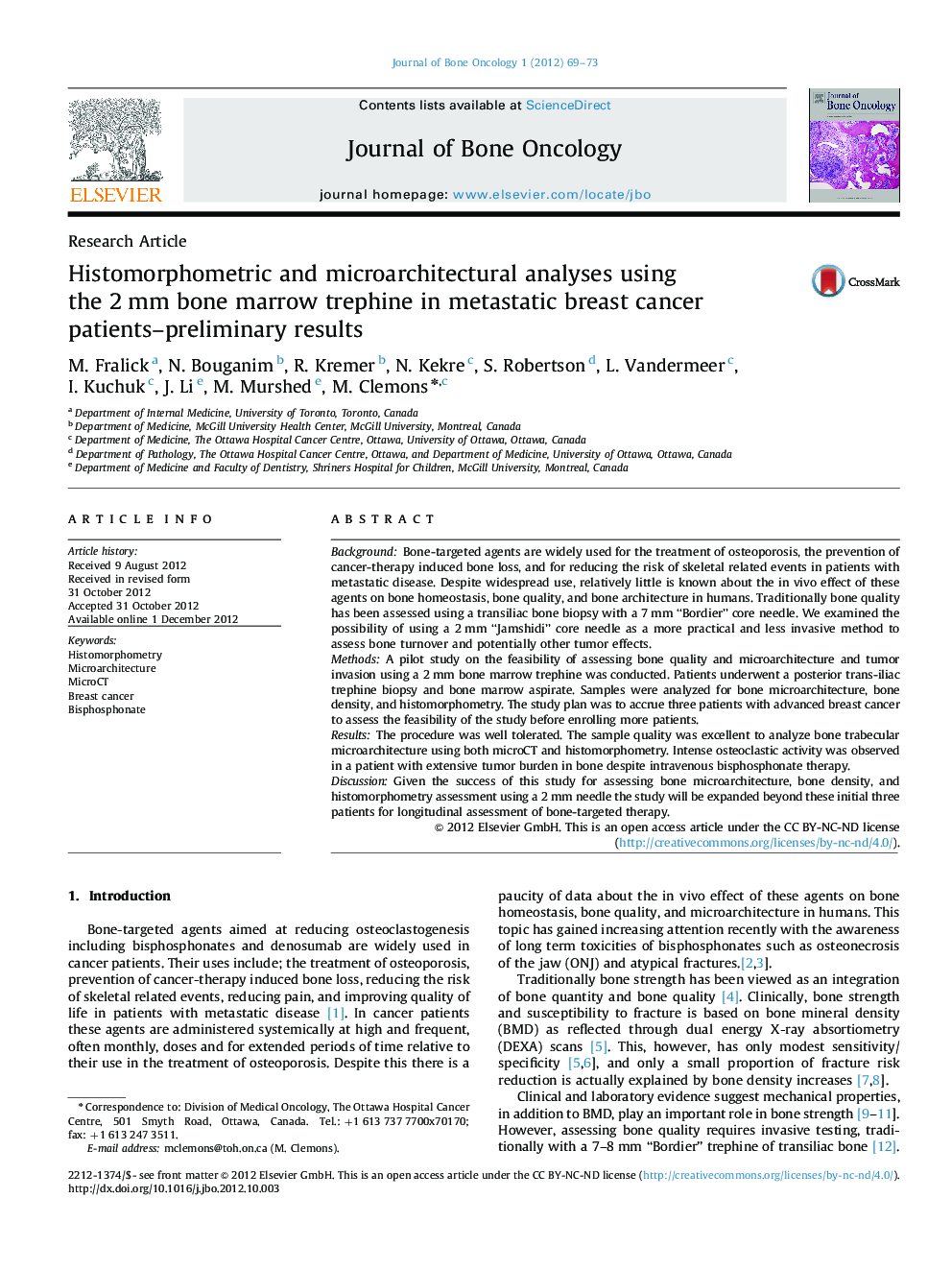| Article ID | Journal | Published Year | Pages | File Type |
|---|---|---|---|---|
| 2136121 | Journal of Bone Oncology | 2012 | 5 Pages |
BackgroundBone-targeted agents are widely used for the treatment of osteoporosis, the prevention of cancer-therapy induced bone loss, and for reducing the risk of skeletal related events in patients with metastatic disease. Despite widespread use, relatively little is known about the in vivo effect of these agents on bone homeostasis, bone quality, and bone architecture in humans. Traditionally bone quality has been assessed using a transiliac bone biopsy with a 7 mm “Bordier” core needle. We examined the possibility of using a 2 mm “Jamshidi” core needle as a more practical and less invasive method to assess bone turnover and potentially other tumor effects.MethodsA pilot study on the feasibility of assessing bone quality and microarchitecture and tumor invasion using a 2 mm bone marrow trephine was conducted. Patients underwent a posterior trans-iliac trephine biopsy and bone marrow aspirate. Samples were analyzed for bone microarchitecture, bone density, and histomorphometry. The study plan was to accrue three patients with advanced breast cancer to assess the feasibility of the study before enrolling more patients.ResultsThe procedure was well tolerated. The sample quality was excellent to analyze bone trabecular microarchitecture using both microCT and histomorphometry. Intense osteoclastic activity was observed in a patient with extensive tumor burden in bone despite intravenous bisphosphonate therapy.DiscussionGiven the success of this study for assessing bone microarchitecture, bone density, and histomorphometry assessment using a 2 mm needle the study will be expanded beyond these initial three patients for longitudinal assessment of bone-targeted therapy.
